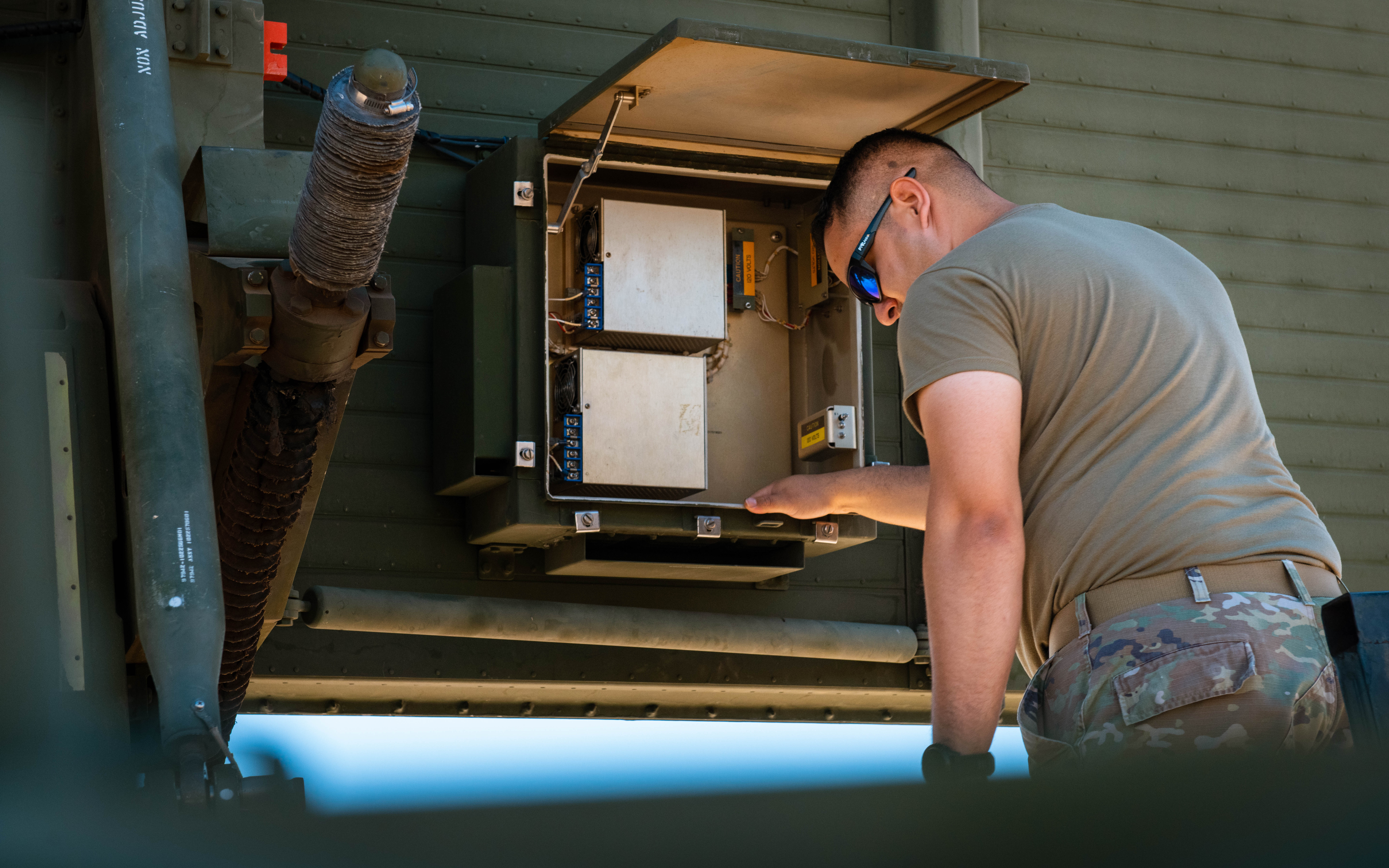Air bases are the lifelines of a nation’s defense, and with the ever-evolving military technology, these facilities require state-of-the-art radar systems that are primarily robust, versatile, and deployable for situational awareness and protection.
In this article, we explore the latest Multi-Band Multifunction Tactical Radar System (MB-MTRS), a cutting-edge solution sought by the US Air Force to address various crucial functions, from air traffic control to weather monitoring and threat detection.
The MB-MTRS Project
The US Air Force has initiated the MB-MTRS project, calling for a radar system that can perform multiple functions critical to air base operations.
The project’s primary goals are to reduce logistical support requirements and electromagnetic interference, as well as enhance deployability capable of being transportable by various means, including military vehicles, aircraft, trains, and ships. With all of these features, this MB-MTRS initiative is set to become a crucial asset for US military deployment worldwide.
Compact Design for Swift Deployment
One of the key requirements of the MB-MTRS the Air Force emphasizes is its compact design.
It must fit within up to three 463L pallet positions on a C-130J aircraft, and a team of four Air Force personnel should be able to set it up within four hours or less. This level of portability and rapid deployment is essential for supporting expeditionary and agile joint forces, which must be able to operate in all weather conditions.
ATC Surveillance and Precision Approach
Moreover, the MB-MTRS is expected to excel in air traffic control (ATC) surveillance, providing aircraft identification, separation, and terminal sequencing for both instrument flight rules (IFR) and visual flight rules (VFR).
Its precision approach capabilities will guide aircraft safely during the final approach phase—vital for maintaining efficient and secure air base operations, especially during critical missions.

Real-time Weather Sensing
The system will also feature real-time weather sensing, enabling air bases to monitor weather conditions continuously. This feature is invaluable for planning and executing operations effectively. Having accurate weather information at their disposal, air base commanders can make informed decisions, ensuring the safety of their personnel and equipment.
Threat Detection and Response
One of the most critical functions of the MB-MTRS is its ability to detect, identify, and track both hostile declared and undeclared aircraft, whether manned or unmanned.
The system’s counter-small unmanned aircraft capabilities make it a valuable asset in countering emerging threats. With these features, air bases will have a heightened level of protection against potential aggressors.
Interoperability
The MB-MTRS is designed with interoperability in mind.
It must be able to exchange real-time radar data with commercial and military air traffic control systems to ensure that data can be seamlessly integrated into more extensive command and control networks, enhancing the overall defense capabilities of air bases.
Furthermore, the system is designed with an open-systems approach, using the Modular Open Systems Approach (MOSA), and adheres to non-proprietary standards and common government standard interfaces.
MB-MTRS Initiative: Three Development Phases
Accordingly, the MB-MTRS project is divided into three development phases, each building on the previous one:
1 | Initial System Design. This phase lays the groundwork for the project, defining the overall system architecture, requirements, and performance expectations.
2 | Preliminary System Design. During this phase, the system’s design is refined, and detailed plans are developed for its construction and implementation.
3 | Prototype Demonstration. The final phase involves building and testing a functional prototype of the MB-MTRS. This prototype will be crucial in evaluating the system’s performance and ensuring that it meets the requirements set forth in the project.
Deployment and Worldwide Readiness
The MB-MTRS is specifically tailored to meet the needs of air bases that rely on rapid deployment and operation in all weather conditions.
These capabilities are crucial in today’s military landscape, where conflicts can arise suddenly and require immediate action.
Air bases that can swiftly deploy and operate with situational awareness are better equipped to respond effectively to emerging threats.

Defense Industry Response
The US Department of Defense has opened the doors for interested companies to submit their proposals for the MB-MTRS project.
The responses are expected to be uploaded in 75-page PDF files by November 13, 2023, to the US Department of Defense Safe Access File Exchange (SAFE) website.
This project represents an exciting opportunity for defense technology companies to contribute to the safety and readiness of air bases.
~
The MB-MTRS project initiated by the US Air Force is a significant development in the realm of defense technology.
It addresses the critical need for versatile, deployable, and multifunctional radar systems that enhance the situational awareness and protection of air bases. By offering capabilities in air traffic control, weather monitoring, threat detection, and more, the MB-MTRS is poised to become a vital asset for military operations worldwide.
With its compact design, rapid deployment, and emphasis on interoperability, this radar system is designed to meet the demands of modern military operations and ensure the readiness of air bases in all situations.
Defense technology companies are now called upon to contribute to this essential project, which has the potential to make a significant impact on the future of air base operations and national defense.










COMMENTS
You must become a subscriber or login to view or post comments on this article.